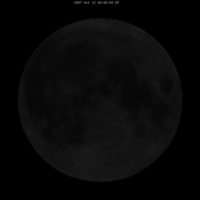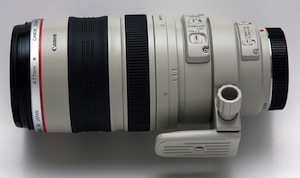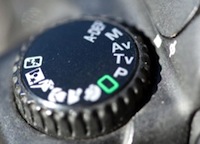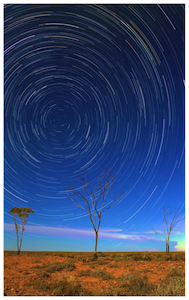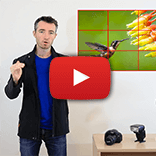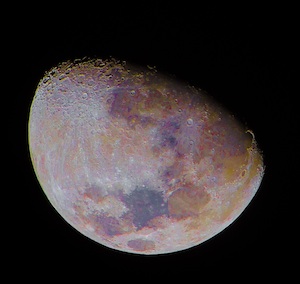 |
| Saturation reveals the moon's colours! |
Extension 1: See the colours of the moon, and stack exposures!
The moon isn't actually white. It's not even yellow. There are several minerals on the moon which each reflect sunlight in different ways. Just because our eyes do not pick up those subtle differences doesn't mean they don't exist. Your camera, unlike your eyes, can pick up the various colours of the moon, especially when saturation is enhanced in post processing afterwards.
Revealing the colours of the moon is as simple as cranking up the saturation of the photo. This is sufficient, however any time saturation is greatly increased, noise also increases, reducing the quality. To help reduce noise, start with a high quality, noise-free photo by shooting on a low ISO as explained previously.
If you've got a program that can do it, it may also be possible to reduce the noise by 'stacking' several photos on top of each other (but you'll need to have taken several shots of the moon to do this, one after the other). If you're able to stack your images, it's better to enhance each individual image a little and stack them on top of each other, rather than just excessively enhancing a single photo.
Not every photo editing software program can do this, but some can. I tend to use Adobe Lightroom for my photo editing, and for this I simply had to download a plugin called 'Enfuse' which is designed for averaging exposures of several photos of the same scene. This is often referred to as HDR, and allows average exposure to be achieved in both the bright and dark parts of an image by mixing three or more images of the same scene on top of each other. Enfuse (trial version) is available as a free plugin download, or simply make a small donation for access to the full plugin.
www.photographers-toolbox.com/products/lrenfuse.php
Using Enfuse, simply select the images you want to combine, increase the saturation in them all a little and proceed to stack them on top of each other ensuring that the 'auto align' box is selected (this will make sure the different shots of the moon all line up correctly). You can then increase the saturation on the final image, slowly revealing the colours in a noise free fashion. If you'd like, you can repeat this process and then combine several of your final images into a single shot. Have a play around, it's good fun, and the results can be pretty impressive!

